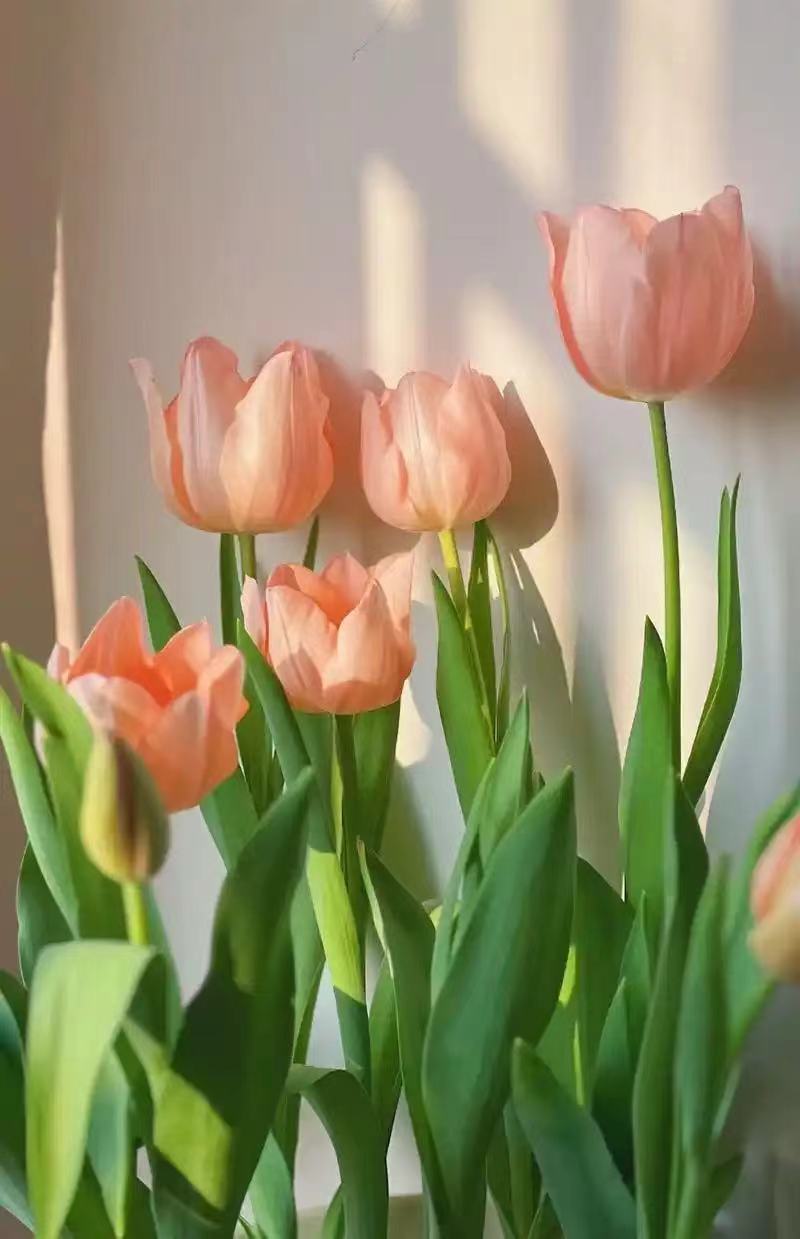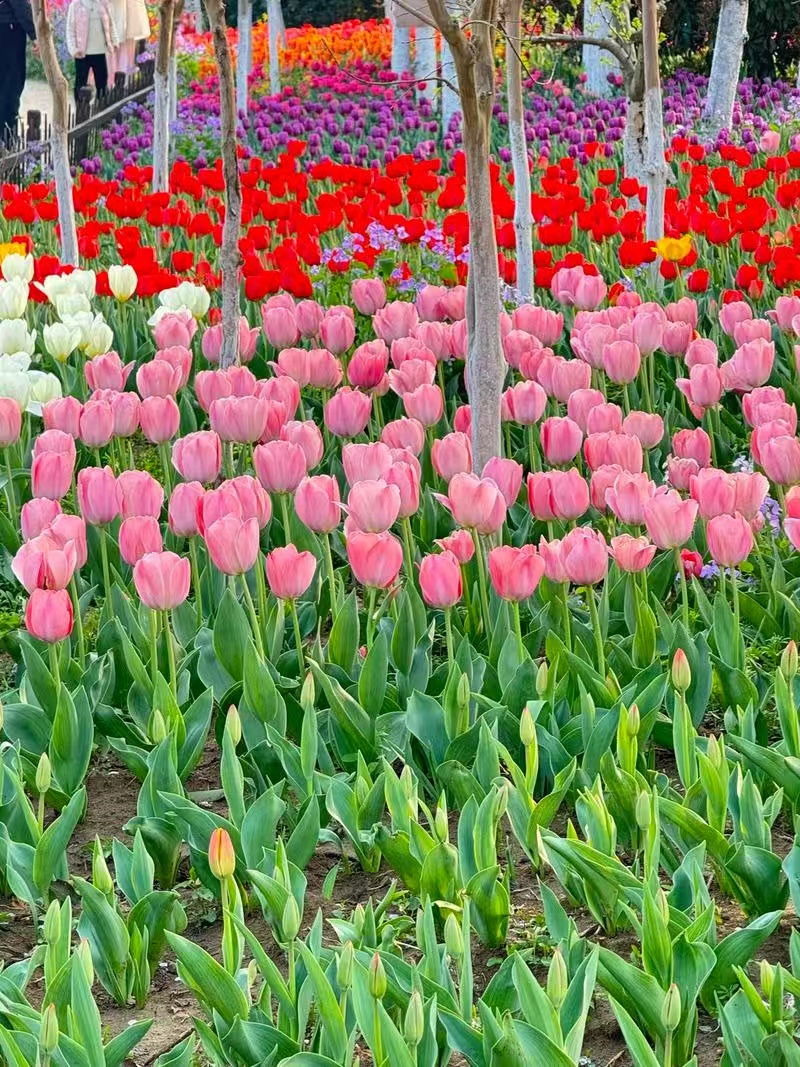Tulips, members of the genus *Tulipa* within the Liliaceae family, stand as one of the most iconic and cherished flowers globally, renowned for their vibrant colors and elegant forms. These perennial bulbous plants have woven themselves into the fabric of horticulture, history, and culture with remarkable depth.
Botanical Characteristics:
Tulips possess a distinctive botanical structure centered around their underground bulbs. These bulbs, composed of fleshy scales, act as energy storage units, enabling the plants to endure dormant periods and rejuvenate each growing season. From the bulbs emerge upright, slender stems, typically ranging from 10 to 70 centimeters in height, depending on the variety.
The leaves of tulips are basal, usually two to six in number, and exhibit a lanceolate or ovate shape. They are often glaucous (with a waxy, bluish - green coating) and clasp the stem at the base. The flowers, the crowning glory of tulips, are solitary and terminal. Each bloom consists of three sepals and three petals, which are often indistinguishable and collectively termed tepals. These tepals can form a cup - shaped, star - shaped, or double - layered structure, showcasing an astonishing spectrum of colors—from classic reds, yellows, and whites to intricate bi - colors, streaks, and even near - black shades. The flower's interior may feature a contrasting “eye” at the base of the tepals, adding to its visual allure.
Cultural Significance:
Culturally, tulips have a storied past, particularly in the Netherlands. During the 17th century, “Tulip Mania” swept through the region, making tulips a symbol of wealth, status, and even speculative frenzy. At the peak of this phenomenon, rare tulip bulbs were traded for exorbitant prices, highlighting their immense cultural and economic value.
Beyond this historical episode, tulips are globally emblematic of spring, renewal, and love. In many cultures, they are exchanged on special occasions like Valentine’s Day or used to adorn Easter celebrations, their bright hues signifying the arrival of warmer, more hopeful times. In Turkish culture, where tulips have been cultivated for centuries, they represent paradise on earth, featuring prominently in art, architecture, and traditional ceremonies, reflecting the nation’s deep - seated appreciation for natural beauty.
Cultivation and Uses:
Tulips are widely cultivated for ornamental purposes, both in home gardens and commercial flower industries. They thrive in well - drained soil and require a period of cold dormancy (vernalization) to bloom successfully, making them well - suited to temperate climates. Gardeners often plant tulip bulbs in autumn, allowing the winter chill to trigger spring flowering.
While primarily grown for their aesthetic appeal in floral displays, cut - flower arrangements, and landscape design, tulips also have minor culinary and medicinal connections in some traditional practices. In certain regions, tulip bulbs were historically used as a food source during times of scarcity, though they must be properly processed to remove toxic compounds. Medicinally, some cultures have explored tulip extracts for potential anti - inflammatory properties, though modern scientific validation of such uses remains limited.
In conclusion, tulips are far more than just beautiful blooms. Their unique botanical traits, rich cultural legacy—from the frenzy of Tulip Mania to their role as springtime icons—and diverse horticultural applications solidify their position as a flower that continues to captivate and inspire people across the world, season after season.



